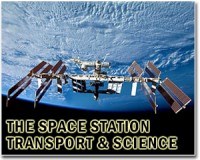 |
El Segundo CA (SPX) Aug 06, 2010 While Wyle has assisted hundreds of astronauts, cosmonauts and civilians who have gone into space since the 1960s, the company has now completed its preparations for NASA's first "human-like" robot for launch aboard the next Shuttle mission and installation on the International Space Station. It may not be the last. NASA's Robonaut 2 (R2), planned to be launched to the International Space Station this November, surpasses previous dexterous humanoid robots in strength, yet is safe enough to work side-by-side with humans. While R2's primary job is helping engineers learn how dexterous robots behave in space, the hope is that through upgrades and advancements, future robots derived from R2 could one day venture outside the station to help spacewalkers make repairs or additions to the station or perform scientific work. Wyle engineers and technicians at its Integrated Science and Engineering Group in Houston provided the following support to the R2 project: + Flight certification and verification of the R2 flight unit + Design, development and certification of all R2 interfaces to the International Space Station including task boards, mounting structure, and power cables + Development of an operations plan and a training program to assist the on-orbit crew and ground controllers in working together with the R2, and + Developed all flight safety and reliability products for both flight hardware and software to ensure NASA safety approval. + The uniqueness of the R2 and where it is going to operate provided some challenges to Wyle's engineering team. "A majority of the development of R2 was completed for terrestrial laboratory use, therefore the typical flight related component/materials selection and safety controls did not exist in the lab design," said Gina Young, Wyle's R2 project manager. "Those items had to be upgraded into the flight design, incorporated into the flight unit and finally tested and certified ready and safe for flight." Once in Florida, R2 will undergo final tests and be packed inside the Leonardo Permanent Multipurpose Module for launch aboard STS-133 Shuttle mission. After it is unpacked on orbit, the robot will be tested to see how it fares in microgravity. Eventually, upgrades and modifications could lead to a robot that helps astronauts with maintenance tasks inside the station or takes on duties outside the station. "Wyle is both proud and excited at this opportunity to apply our experience and expertise in safely flying humans in space, to now helping NASA safely fly robots in space," said Jim Kukla, Wyle's vice president of engineering in Houston. R2, which was developed through a partnership between GM and NASA, is the product of a long line of robotics work that has been a part of Johnson Space Center for decades, including EVA Retriever in the 1980s, DART in the 1990s and Robonaut 1 during the last decade. Almost 200 people from 15 countries have visited the International Space Station, but the orbiting complex has so far only ever had human crew members - until now.
Share This Article With Planet Earth
Related Links Wyle Station at NASA Station and More at Roscosmos S.P. Korolev RSC Energia Watch NASA TV via Space.TV Space Station News at Space-Travel.Com
 NASA delays spacewalks to fix ISS cooling pump
NASA delays spacewalks to fix ISS cooling pumpWashington (AFP) Aug 5, 2010 NASA on Thursday pushed back by one day the first of two spacewalks to fix a pump module on the International Space Station's (ISS) cooling system that dramatically failed last week. The first spacewalk will get under way at 1055 GMT on Saturday, a week to the day that an ammonia pump on the ISS failed, setting off alarms in space and at Mission Control on Earth. A second sortie has bee ... read more |
|
| The content herein, unless otherwise known to be public domain, are Copyright 1995-2010 - SpaceDaily. AFP and UPI Wire Stories are copyright Agence France-Presse and United Press International. ESA Portal Reports are copyright European Space Agency. All NASA sourced material is public domain. Additional copyrights may apply in whole or part to other bona fide parties. Advertising does not imply endorsement,agreement or approval of any opinions, statements or information provided by SpaceDaily on any Web page published or hosted by SpaceDaily. Privacy Statement |